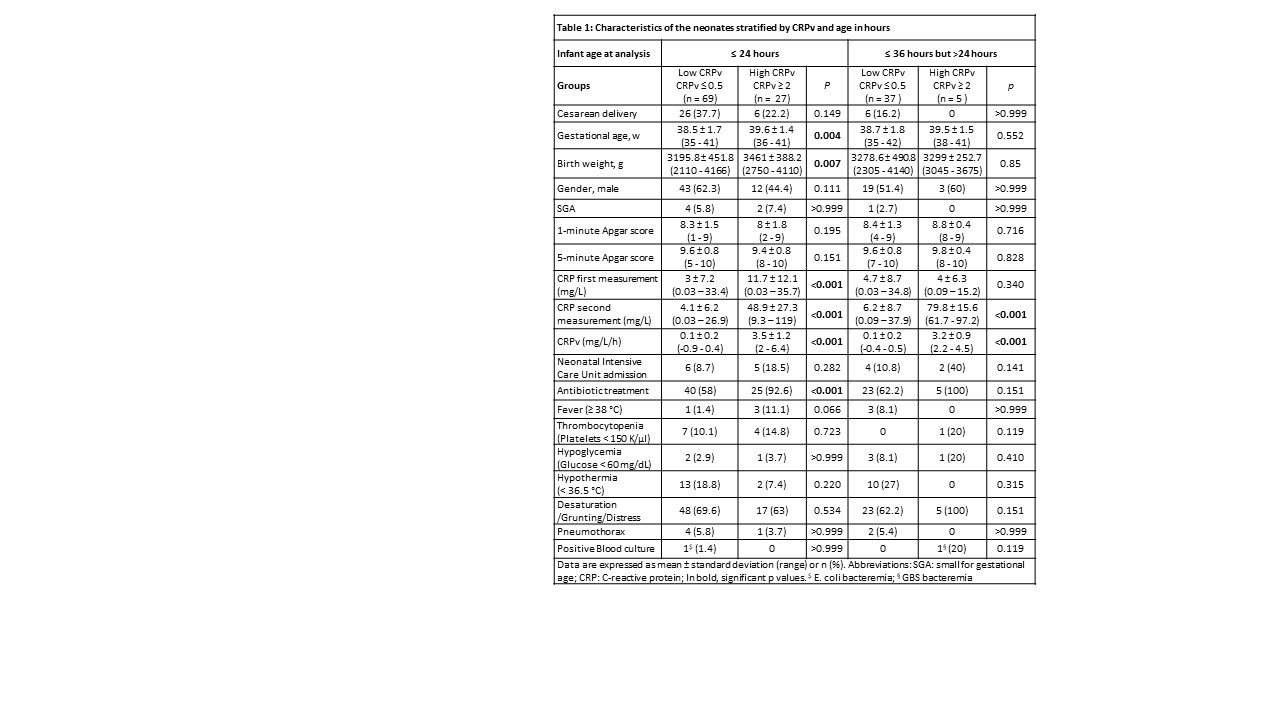Neonatal General
Neonatal General 5: COVID, Infections Diseases
703 - Assessment of CRP velocity as a useful biomarker in the diagnosis of infection in neonates
Publication Number: 703.233
- RM
Ronella Marom, MD (she/her/hers)
director of nursery newborn
Department of Neonatology1, Dana Dwek Children's Hospital
tel aviv, HaMerkaz, Israel - JH
Jacky Herzlich, MD (he/him/his)
DIRECTOR OF NURSERY B DEPARTMENT
Dana Dwek Children's Hospital, Tel Aviv Medical Center
Tel Aviv, HaMerkaz, Israel
Presenting Author(s)
Co-Author(s)
Background:
C-reactive protein (CRP) is commonly used for the diagnosis of neonatal infection. Recent reports indicate that CRP levels and the calculated CRP velocity (CRPv) may be useful for early identification of infectious disorders in children and adults. Data on CRPv as marker of infection in neonates is scarce.
Objective:
To investigate the effectiveness and usefulness of CRPv in the diagnosis of neonatal infection.
Design/Methods: This is a retrospective review of medical records of newborns ≥ 35 weeks of gestation and birth weight (BW) ≥ 2000 grams, who underwent partial sepsis work-up, between January and December 2020. CRPv (mg/L/h) was calculated by dividing the interval between two consecutive CRP measurements with the corresponding interval time. Infants were grouped by low CRPv ≤ 0.5 mg/L/h and high CRPv ≥2mg/L/h and by time of evaluation (≤ 24 hours and < ![if !vml] >![]() < ![endif] >24 hours ≤36 hours).
< ![endif] >24 hours ≤36 hours).
Results:
A total of 138 infants were included. The rate of morbidity was similar in all groups. Infants with high CRPv, tested within the first 24 hours, had a higher gestational age (p=0.004), BW (p=0.007), rate of antibiotic treatment (p < 0.001) and first CRP measurement (p < 0.001) than those in the low CRPv group. The second CRP measurement was higher in the high CRPv group than in the low one (p < 0.001) at both time points of analysis (Table 1).
Conclusion(s):
Higher values of CRPv were not associated with a higher rate of morbidity. Our findings suggest that CRPv did not prove to be an effective biomarker for diagnosis of neonatal infection.
